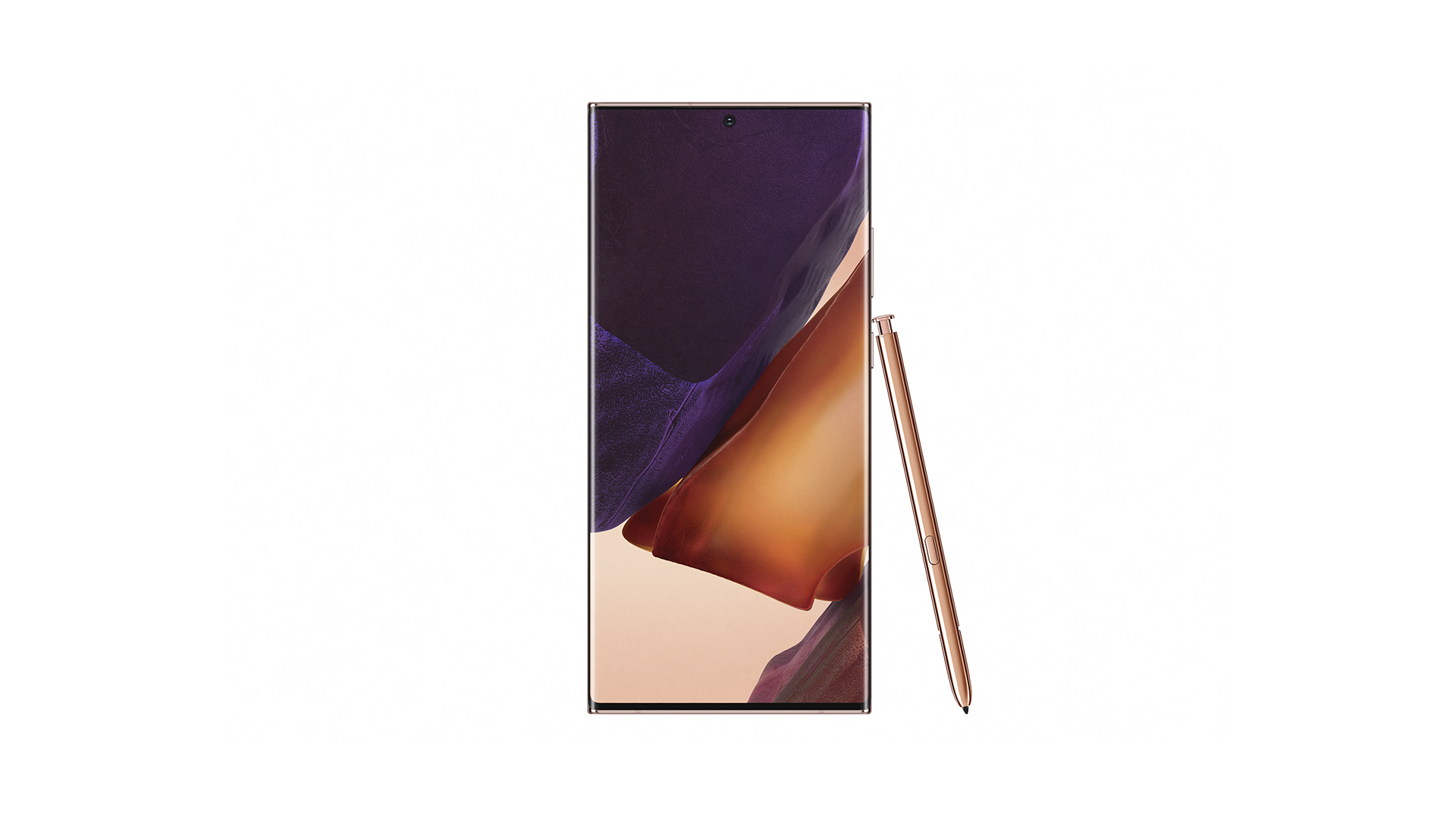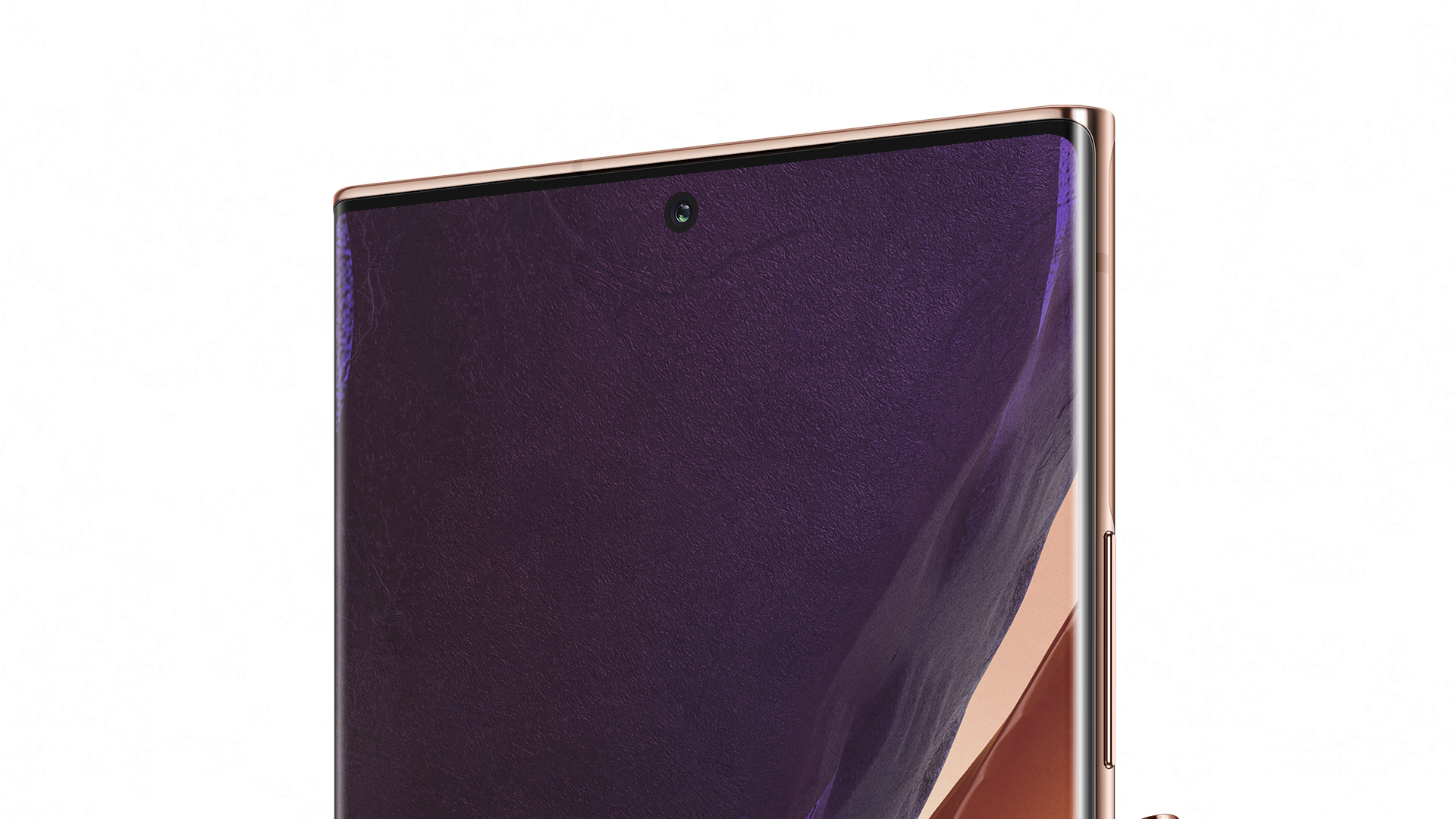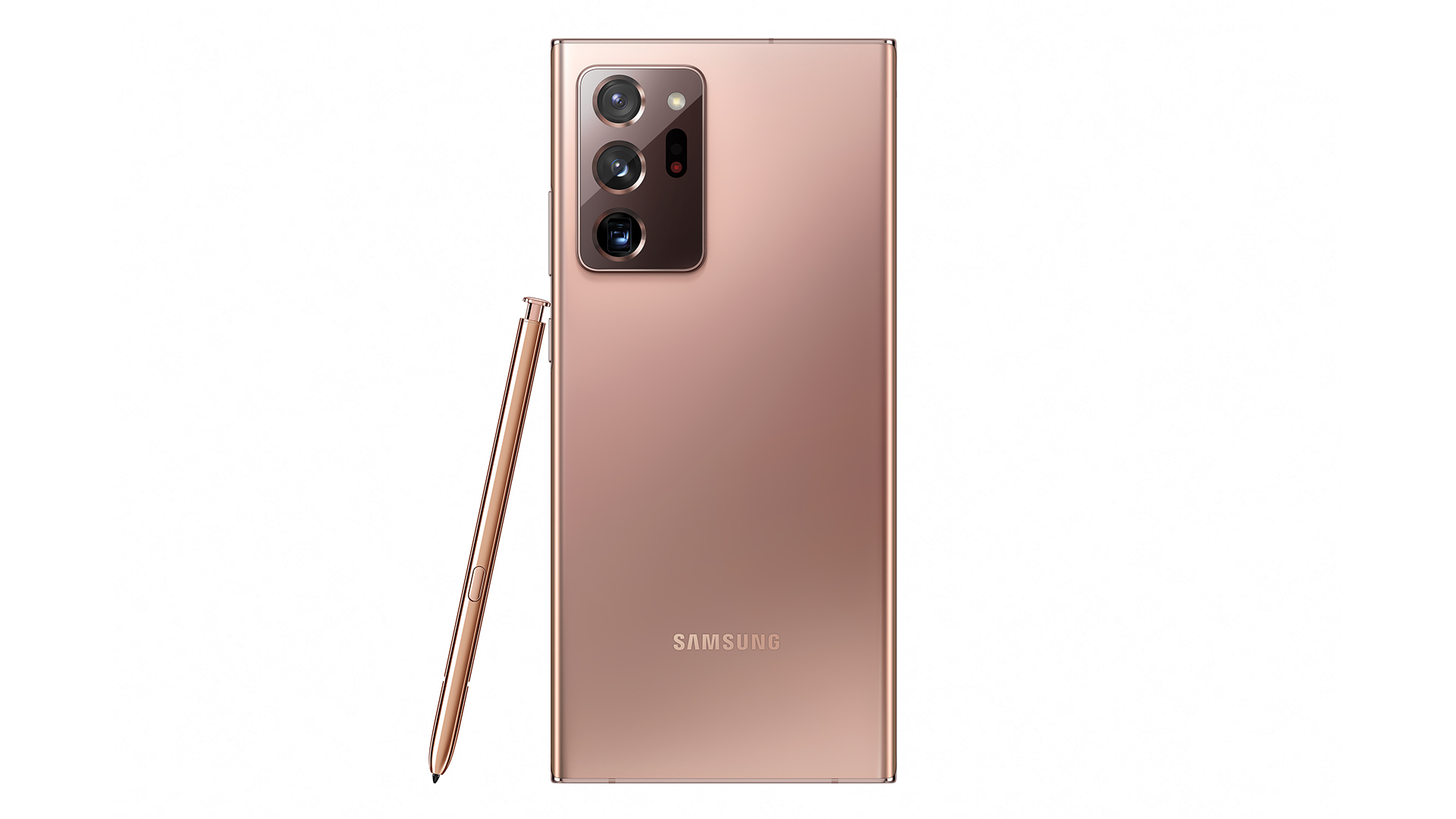What Hi-Fi? Verdict
An Ultra-impressive flagship phone from Samsung, but there is a worthy alternative
Pros
- +
Big, colourful screen
- +
Great camera and zoom
- +
Smart design
Cons
- -
Beaten for audio performance
- -
Rivals deliver more detailed video
Why you can trust What Hi-Fi?
If there’s one thing we know about the Samsung Galaxy Note 20 Ultra, it’s that it is Samsung’s flagship phone for 2020. Further than that, the company’s phone line-up, in line with many other big brands, has become increasingly confusing – a sign of the difficulty (and desperation) in trying to find new niches in a crowded market.
The Galaxy Note 20 Ultra is definitely the top dog, but further down the range, it gets a little confusing. The Note phones still feature the S Pen stylus, and there are still two phones in the range. But while it used to be a simple matter of screen size, the two Note phones are now quite different. The Galaxy Note 20 Ultra has superior spec to the smaller Note 20, with a bigger, higher resolution screen, a glass back as opposed to plastic, a better camera, an SD card slot, more RAM and a larger storage option.
Then there are the S20 phones: the Galaxy S20 and Galaxy S20 Ultra. These non-Note models are traditionally a step below; offering almost flagship specs for a more affordable price. Yet this time, the specs on the Note 20 Ultra and the S20 Ultra are pretty similar. There’s a squared-off design and new Gorilla Glass 7 on the back, but otherwise, it’s the same screen resolution, same 120Hz refresh rate, same processor (in the UK) and even the same front cameras. What’s more, the S20 is more expensive. It’s all a little confusing.
Nevertheless, the Galaxy Note 20 Ultra is, without doubt, Samsung’s headline-grabber. So, should you be grabbing one? And can you even get your hands around it?
- What to expect from the Samsung Galaxy S21
Price
The most affordable Galaxy Note 20 Ultra still costs a hefty £1179 ($1299, AU$1849), which gets you 256GB of storage in the UK and Australia, but only 128GB in the US. If you want 512GB of internal storage, you’re looking at a price of £1279 ($1449, AU$2199).
Features

Thanks to the barely-there bezels, the Note 20 Ultra has a 16.4 x 7.7 x 0.8cm chassis, which weighs just 208g. The (world first) Gorilla Glass 7 back and front helps give it a weighty, premium feel and ensures it’s pretty robust when it comes to scratches.

Screen 6.9in AMOLED
Resolution 3088 x 1440 (496ppi)
Processor Exynos 990
Front camera 10MP
Rear camera Triple 108 MP, (wide), 12 MP (periscope telephoto), 12 MP (ultrawide)
RAM 12GB
OS Android 10
Storage 128GB / 256GB / 512GB
The back is frosted for a smart matt finish, which is far less prone to showing grubby finger smudges than the Note 10. The Note 20 Ultra is available in Mystic Bronze, Mystic Black and Mystic White. We like these new shades and the matt finish, with Mystic Bronze our pick of the bunch.
The latest hi-fi, home cinema and tech news, reviews, buying advice and deals, direct to your inbox.
There's a huge camera bump, too. The triple lens really sticks out and while it does look smarter than the Note 10 and S20, it makes for a sizeable dent in the design. This is most noticeable when placed ‘flat’ on a surface, it rocks on the lens. It also makes for an aggressive vibration sound as the phone wobbles on the lens.
Like many big smartphones on the market now, the Note 20 Ultra is almost impossible to use one-handed. More surprisingly, the curved edges of the display cause some issues. Reaching for the top of the phone, or simply holding it with one hand and navigating with another, it is too easy to unintentionally touch the screen. Nudging the phone halfway up the screen while you’re typing leads to all sorts of jumps and restarts. Are we just clumsy or is the phone a little too sensitive? Perhaps software updates will iron this out.
The Note range gets a processor upgrade, but it’s the same Exynos 990 chip as on the S20 in the UK and Asia. This will leave some disappointed, including those who see Samsung’s Exynos offering as inferior to Qualcomm’s Snapdragon chips. The twist in the tale is that Note 20 Ultra models in the US will get the Snapdragon 865+ chip, due to Samsung’s preference for diversifying when it comes to parts.
Of course, according to Samsung, there is no difference in performance between the Exynos and Snapdragon. Benchmarks may reveal some, but from our experience in day to day use, for the vast majority of people, it simply won’t be noticeable.

The S Pen has had an upgrade, however, proving faster and coming with some new Air Gesture features that allow you to do your best Yoda impression and control the phone without any physical contact with the screen. The clever functionality of the stylus remains a key feature for the Note range and for those who master its many functions, from writing to drawing to clicking and pointing, it can be a real game-changer.
The battery has been boosted to 4500mAh, which feels sufficient, though the large screen uses up a lot of power. The phone will last around a day of average use which, while pretty standard for flagship smartphones, isn’t extraordinary.
Camera technology has become the key battleground for phones in recent years, with the number of lenses and megapixels rising at a rapid rate. The Note 20 Ultra continues the trend, with a 108MP wide lens (first seen on the S20 Ultra), as well as a 12MP telephoto, with 5x optical zoom, and a 12MP ultra-wide. There's also a 10MP front camera with dual pixel autofocus.
The headline feature is the 5x optical zoom and up to 50x digital zoom. And it is something of a game-changer. It really does allow you to play secret agent and focus in closely on objects and indeed people far out of your natural eyesight. It’s easy to use and the quality holds up well, with anything up to 30x zoom remaining sharp, while even the maximum zoom is still functional.
Samsung has also introduced a whole host of swipes and gestures for easy access to the camera – a simple swipe to flip between front and back cameras makes a lot of sense. Small but well thought out upgrades such as this are welcome.
As for the results, photos look colourful, detailed, clean and sharp. The over-saturated colours of previous Samsung phones have gone and you’d be hard-pressed to pick these photos out of a line-up against the likes of the Apple iPhone 11 Pro Max or Google Pixel 5. Zoom is no doubt a key strength here, while perhaps low-lit scenes and the selfie camera could be pipped by Apple’s optics, but it’s a close call.
While you can shoot in 8K, we’d recommend sticking to 4K or even Full HD for the best results, the lower resolutions delivering more stable and less storage-hungry videos. Again, a realistic delivery of colours means natural skin tones in front of faithful landscapes. Occasionally we sense a touch more colour in the green grass or deep blue skies than might be necessary, but overall the video quality is excellent.
Screen

You may be able to shoot in 4K or even 8K but, unlike the Sony Xperia 1 II, the Note 20 Ultra doesn’t feature a 4K resolution screen. The 6.9in AMOLED Edge screen sports a 3088 x 1440 resolution, “WQHD+” screen.
Aside from pixels, the Adaptive 120Hz feature means the phone will switch automatically between 60Hz and 120Hz to best suit the content, which is a neat feature, but not the variable refresh rate holy grail some superusers wanted to see.
The good news is the Galaxy Note 20 Ultra delivers bright, vivid video, with motion handled smoothly. Watching The Sinner on Netflix, dark scenes are well lit, revealing enough detail, while good contrast levels make for an engaging image. More colourful scenes, such as those served up by live sport, show the Note 20 Ultra sometimes errs on the side of over-saturation, but it’s likely just a matter of personal preference.
Compared to the class-leading Xperia 1 II you don’t get the level of precise detail and sharp edges that the 4K screen affords, nor does this Note manage the rich, filmic presentation. But up against any other Android phone, and in isolation, it more than holds its own, and the big display ensures there are times when this display will really steal the show.
Sound

When it comes to audio, there are a few design tweaks. Samsung has chosen to flip the volume and on/off buttons from the right side to the left, and has done the same with the speaker at the base of the phone.
AKG are on board once more to help with the audio tuning and the Galaxy Note 20 Ultra supports surround sound with Dolby Atmos technology (Dolby Digital, Dolby Digital Plus included). That said, the lack of aptX HD Bluetooth support seems strange and disappointing. Of course there’s no 3.5mm headphone jack – Samsung would rather you connect its Galaxy Buds Live.
Nevertheless, the Galaxy Note S20 Ultra continues the fine sonic work of previous S phones, delivering good detail, solid bass and natural, open treble. Music is entertaining and dynamic, with a level of fidelity worthy of a flagship phone.
Switch to the latest iPhone or the Award-winning Sony Xperia 1 II, and you will hear more, however. Apple’s refinement remains impressive while the Sony handset delivers a clear step up in terms of resolution. If you want to be immersed in the music and not miss a breath, let alone a beat, the premium Xperia 1 II uncovers more detail at both ends of the sonic spectrum, making for a more musical delivery.
Verdict
The Galaxy Note 20 Ultra delivers on the Ultra promise. It’s big and rather expensive, but in return, you can enjoy a great screen, a feature-packed camera and good sound.
In an ultra-competitive market, with a huge choice of phones (simply from Samsung alone), it can be hard for every handset to stand apart. But thanks to the S Pen and ‘power user’ specs, the huge, colourful screen, and that crazy zoom on the camera, it’s clear to see that Samsung has managed that with the Note 20 Ultra.
That said, if you’re prepared to pay for best-in-class audio and video performance, it’s beaten by the Sony Xperia 1 II, making it a four-star phone in our book.
SCORES
- Screen 4
- Sound 4
- Features 5
MORE:
Read our guide to the best smartphones
Read our Sony Xperia 1 II review
Read our Apple iPhone 11 Pro Max review
Read our Google Pixel 5 review
What Hi-Fi?, founded in 1976, is the world's leading independent guide to buying and owning hi-fi and home entertainment products. Our comprehensive tests help you buy the very best for your money, with our advice sections giving you step-by-step information on how to get even more from your music and movies. Everything is tested by our dedicated team of in-house reviewers in our custom-built test rooms in London, Reading and Bath. Our coveted five-star rating and Awards are recognised all over the world as the ultimate seal of approval, so you can buy with absolute confidence.

